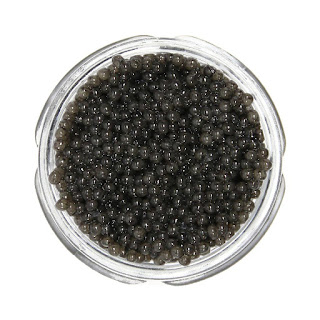Tips For Serving Caviar
Caviar has been enjoyed all throughout history. The ancient Persians heavily salted their caviar to preserve the eggs, and it was not until it be and popular in Russia, that a lightly-salted version became the custom. The trade off to less salting was that the caviar did not keep very long, and so the tradition of eating caviar as an appetiser, became very popular.
Nowadays, caviar has an affordable luxury at dinner parties and bouquets, and everyday occasions all over the world. For obvious reasons, knowing how to properly prepare and serve caviar is very important to get of the taste benefits that caviar offers.
1. One hour before serving: You should chill the serving plates in the refrigerator- as warm or hot plates is going to affect how long the caviar can sit out.
15-20 minutes before serving: Remove it from the refrigerator and let the unopened tin acclimate to room temperature. Keep in mind to not open the container at this time.
2. Prepare your caviar serving platter: Add traditional caviar accompaniments: bite-sized pieces of lightly-toasted triangles (and lightly buttered), blinis, shallots, etc.
Remove your bowl from crème fraiche from the refrigerator.
3. Add crushed ice to the caviar server (or decorative tray/dish- ideally made of silver or crystal).
4. Open the tin of caviar and place it on top of the crushed ice ensuring the tin is completely surrounded by ice.
5. Remove the chilled serving plates and place them along with the caviar tray and accompaniments on your serving table so that the guests can serve themselves.
15-20 minutes before serving: Remove it from the refrigerator and let the unopened tin acclimate to room temperature. Keep in mind to not open the container at this time.
2. Prepare your caviar serving platter: Add traditional caviar accompaniments: bite-sized pieces of lightly-toasted triangles (and lightly buttered), blinis, shallots, etc.
Remove your bowl from crème fraiche from the refrigerator.
3. Add crushed ice to the caviar server (or decorative tray/dish- ideally made of silver or crystal).
4. Open the tin of caviar and place it on top of the crushed ice ensuring the tin is completely surrounded by ice.
5. Remove the chilled serving plates and place them along with the caviar tray and accompaniments on your serving table so that the guests can serve themselves.
Tips:
- Handle caviar with extreme care because the eggs are quite fragile.
- You should rinse all non-sturgeon caviars before serving. This will prevent the colour from running.
- In order to properly taste caviar, you should place the grains into your mouth and let them burst forth on your tongue.
- Caviar can spoil quickly, and therefore it is important to keep it nestled in crushed ice, and ideally-served and eaten immediately one it has opened.
- You should never cook caviar, as it may rupture the eggs. If a recipe calls for a caviar, make sure you add it in the end, or as a garnish.
Author’s Bio: The author is an avid blogger. This article is about caviar.

.jpg)

Comments
Post a Comment